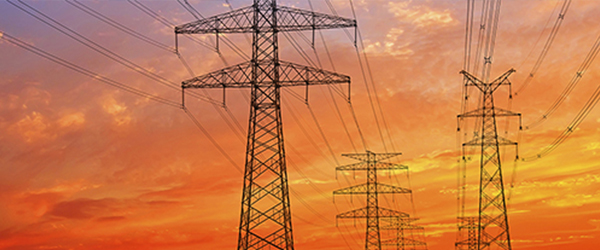Energy Pricing Explained: The Role of Capacity in Electricity

Do you understand the basics of energy pricing? How about how to make the best energy decisions for your business?
If you answered “No” to either question – or even a firm “Maybe...” – you’re not alone. The energy market can be difficult to understand and navigating the right solution for your business is no small challenge.
In recent articles, we broke down two complex topics – cost components and pass-through costs in electricity – to help you understand what influences the price you pay for your energy supply.
Here, we focus on the role of capacity in electricity.
How capacity affects your energy bill
Unlike other forms of energy, electricity must be generated and consumed at the same time. Capacity helps generators understand how much electricity they need to provide to the grid to ensure that electricity always remains available to all consumers.
Comprising about 25 percent of your total energy spend, capacity represents your electricity bill’s second-highest cost component (after the energy portion).
Think of capacity as a parking lot at a mall: Ample spaces are installed to accommodate the busiest shopping day of the season. Capacity provides sufficient generation (or a parking spot) for the hottest day and hour of the summer.
Grid operators work with generators to guarantee supply meets demand, which can result in tapping into additional capacity from less frequently used power generation assets that may not be as efficient.
Capacity charges are paid to ensure the grid operators recoup their costs.
What does capacity include?
To understand capacity fully, let’s review what it includes:
-
Capacity Cost: The generation price set per kWh by the grid operator forward capacity market auction.
-
Capacity Tag: The kW demand used by a facility on the peak hour of the peak day per the grid operator.
How capacity charges are set
Though consumers can’t participate in setting the price, capacity charges aren’t arbitrary numbers assigned by generators.
Typically, competitive auctions determine the price for the area being served. Before each auction, the grid operators provide estimates for peak electricity usage for their region. Bidders then bid in existing power plants, new power plants, imports, demand response and energy efficiency initiatives.
The auction is designed to ensure that there’s enough capacity to meet the estimated peak usage plus a reserve margin, which is a cushion for unforeseen events. An accepted bid is a commitment. If a capacity resource is not available when needed, a financial penalty is determined for that resource owner. It’s important to note that capacity pricing changes each auction year.
As for who’s financially responsible for capacity charges?
The generators’ operation costs are passed to the grid operators, then to the electricity providers, who then pass the charges on to their customers. In short, customers pay a fee to ensure that the electricity they might use is there when they need to use it.
Capacity tags
A capacity tag is a component of your overall capacity charge. It’s the total kWh used by your facility on the peak hour(s) of the peak day(s).
Each consumer is assigned an individual capacity tag. An organization’s tag is tied to the number of capacity units the business will require on the peak demand day(s) of the year. This assignment impacts your energy costs for next capacity year.
How are capacity tags determined?
While the actual cost of capacity is determined system-wide, your individual capacity tag is established by your electricity demand when the system is peaking.
On an annual basis, each utility or distribution company is required to calculate and report its peak load contribution to their grid operator. At the end of the summer season, the regional transmission organization (RTO) identifies the highest peak load hours that occurred during a specified period.
The utility then determines each customer’s specific load during these hours and the customer’s peak load capacity is calculated.
How long do you have the same capacity tag?
Capacity tags are analyzed annually, meaning you have the same tag for one year. However, you can affect your assigned tag in the future.
How can you lower your capacity tag?
Annual capacity rates are set based on consumption during peak hours. If your business can effectively predict the potential peak day(s), you can temporarily reduce your electricity usage to lower your capacity tag for the following year.
A capacity tag reduction can help mitigate the increase in capacity costs going forward – and is likely to generate additional savings.
Schools are good candidates for this approach, as their students and staff are gone for most of the summer, and they can curtail usage more easily without disrupting day-to-day operations. In this scenario, be aware that any efforts to reduce costs don't take effect until the next school year.
Learn more about your options for managing your energy costs here.